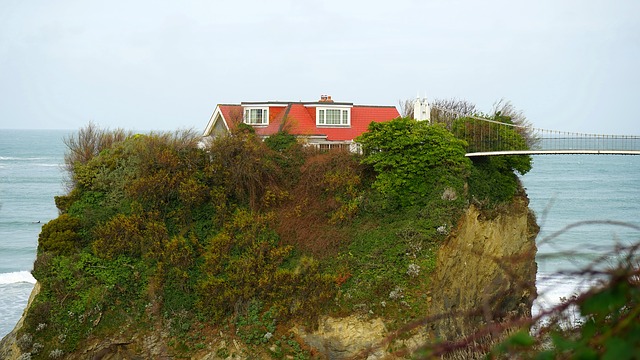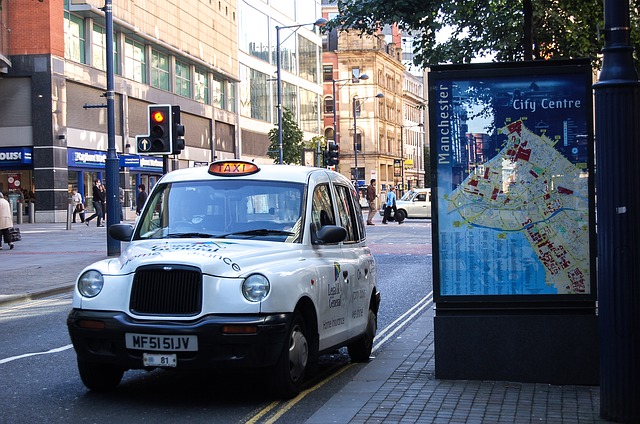Tony’s taken up running. Again.
This vainglorious little page records my personal triumphs and disasters as I plod around the dark wet streets and over the windswept moors to try to get back into shape.
A slide, cocktail bars and a cinema room: inside the UK’s most luxurious student accommodation
A slide, cocktail bars and a cinema room: inside the UK’s most luxurious student accommodation
Full story at the Daily Telegraph property section
Forget the damp basements, slugs climbing up the walls and lumpy mattresses of your university halls. Developers have realised that they have to work much harder to attract the current crop of students and their rent money.
A slew of student properties across the country now boast features including rooftop bars, saunas, cinema rooms and even a helter skelter, to make getting out of bed and off to morning lectures that little bit more tempting.
Boasting some of the wackiest design is True Glasgow, where KKA Architects installed a giant slide in its accommodation block. There are also indoor swings, and a so-called dedicated festival area, comprising a renovated caravan to listen to music in, deck chairs and picnic benches. And, of course, study rooms – they are students after all.
Theresa May urged to drop personal allegiances and allow new homes on Greenbelt land to help solve housing crisis
Theresa May urged to drop personal allegiances and allow new homes on Greenbelt land to help solve housing crisis
Published in the Sunday Telegraph 9th September 2018
Theresa May is being urged to find the “political courage” to drop her opposition to building on green belt land to help tackle the housing crisis.
In a new paper, Simon Clarke, a Tory member of the Commons Treasury select committee, describes progress on building new homes as “painfully slow” and says current restrictions imposed on the buffer zones have become the “central obstacle”.
The paper, published by Freer, a new Conservative think tank, proposes relaxing rules on building homes within half a mile of railway stations – areas that are likely to be in “high demand” and are already well served by transport links.
Mr Clarke says his plan would free up land for at least 1.5 million new homes. The proposal is understood to have the backing of several senior ministers.

Investment in UK student accommodation remains resilient despite fall in university acceptance
Investment in UK student accommodation remains resilient despite fall in university acceptance
- £1.4bn of student accommodation stock was transacted between January and July
2018 volumes are forecast to reach £4bn - Overall acceptances for places at university for 2018/9 fell by just 1% despite demographic dip
- The UK student accommodation market continues to perform well with £1.4bn worth of stock transacted in the first seven months of 2018, despite a dip in overall acceptances for places at university for 2018/19, according to Cushman & Wakefield. On average, there are currently two students for every purpose-built student bed.
Cushman & Wakefield’s mid-year UK Student Accommodation briefing revealed that a further £1.3bn of stock is currently under offer, with early estimates indicating that approximately £4bn will be transacted by the end of the year. In addition, there are approximately 11,000 bed spaces being marketed to investors totalling £725m. Portfolios represent 52% of transactions between January and July.
Russell Hefferan, Associate in Cushman & Wakefield’s Student Residential Investment team said: “After a relatively slow start to the year, transactions are now accelerating with around £1.30bn currently under offer. There is an increased level of demand for affordable, built out schemes, with asset management angles that are not necessarily in Russell Group locations. We are also seeing an increased appetite for forward fund opportunities in prime regional cities where there are strong supply and demand dynamics.”
According to UCAS, overall acceptances for places at university were down by 1.1% for 2018/19, with UK acceptances down by 1.9%, despite a near 3% fall in the number of UK 18-year olds. However, EU students placed has grown by 3%, with non-EU international students growing by 4%. UCAS data also shows that there are now clear divisions in the market, with acceptances to higher tariff universities growing by 1%, whilst those accepted to lower tariff institutions falling by 3% largely mirroring last year.
David Feeney, Associate in Student Accommodation Advisory at Cushman & Wakefield said: “Overall demand for accommodation remains strong, with an increasing number of students demanding a purpose-built bed space. A similar number of bed spaces will be delivered for 2018/19 entry as was the case in 2017, with the average price of a new en-suite bed at £148 p/w broadly in line with that observed last year.
“However, there are now clear divisions in the market – not only in terms of students’ choice of university, but in the success of stock in towns and cities across the UK. Whilst some locations are seeing significant rental increases, in others some rents are falling due to competition, product choice and market digestion issues.”

Three policy priorities for Sheffield City Region from Centre for Cities
Three policy priorities for Sheffield City Region from Centre for Cities
Sheffield City Region will elect its first metro mayor in May. He or she will need a vision for the city-region and clear strategic, deliverable policies to meet it. The challenge and workload will be considerable, with powers and expectations ranging from delivering policy, to establishing the institutions and capacity for effective city-region governance.
This briefing sets out three policy priorities to help the new metro mayor hit the ground running from the start of their term:
- Introduce a clean air charge to tackle pollution and to fund better public transport across the city region
- Develop a spatial plan to boost the city region’s commercial centres, and to make the most of the business opportunities they offer
- Take action to address the skills deficits across all ranges in the city region
Download the Centre For Cities report by downloading or reading online.

Notable Real Estate Trends To Watch For In 2018
Notable Real Estate Trends To Watch For In 2018

As the real estate market continues to evolve, new trends are emerging for 2018. Buyers will be more in control as the housing supply will finally catch up with buyer demand, according to a report by Realtor.com. Additionally, more millennials will be looking to get out of their parents’ basement and purchase a home of their own.
Real estate agents have the challenging task of changing with the market and being responsive to their clients’ needs. Whether it is a buyer looking to purchase a new house or a seller looking to get the best price for their home sale, real estate agents will need to stay up on the trends of 2018 and be ready to respond to a growing demand for real estate.
Ten members of Forbes Real Estate Council shared what trend in real estate they predict will have the biggest impact on their business in 2018. Here is what they had to say:
 All photos courtesy of Forbes Councils members.
All photos courtesy of Forbes Councils members.Real estate experts share what to watch for.
1. Co-living And Community-Driven Spaces
Co-living and community-driven residential will increasingly have a larger impact on the multifamily industry as it changes to reflect a new wave of renter demands and wants. Just as amenities have defined the last decade of commercial real estate development, the need for unique experiences and services will heighten competition. – Benjamin Pleat, Doorbell Inc.
2. Short-Term Rentals
The rise of the short-term rental market has created a boom in opportunity for large property owners or the single family owner. Priorities range from renting a room occasionally for extra cash to renting entire vacation homes at three to five times the local and regional market since you now can access a global community. – Susan Leger Ferraro, Peace, Love, Happiness Real Estate
3. Fractional Investing
As peer-to-peer lending and crowdfunding catch mainstream attention, folks looking for greater diversification and passive investment opportunities will engage in factional investing. The last few years have seen some extremely credible startups innovate in this space, and next year could lead to individuals moving away from sole ownership to fractional ownership via crowdfunding. – Sohin Shah, InstaLend
4. Smaller Living
Tiny apartments and mobile living will be a solution to increasing housing density in overpopulated areas. This will become more of a norm in big cities and will drive up operating income on existing apartment stock. This likely won’t have a huge effect on 2018, but it will over the next decade. – Nathaniel Kunes, AppFolio Inc.
5. New Appraisal Legislation
The new tax bill may further restrict new home-buyers from entering the market. Implementation of appraisal management company regulations in 2018 will increase costs and have the greatest impact on our business. It will increase the cost to do business, which will ultimately increase the cost to the consumer. – Cindy Nasser, PCVMurcor
6. The Rise Of The Real Estate Investor
7. On-Demand Access For Renters
We often hear from renters that they are too busy to sweat the small stuff. They want immediate tour confirmations, like booking a restaurant on OpenTable, and near-immediate confirmation that they have leased, like booking a hotel. This real-time service expectation from a new generation of renters is exactly what we plan to cater to in 2018. – Anthemos Georgiades, Zumper
8. Growth Of Private And Alternative Real Estate Investments
We expect consumers will continue to invest more capital into private and alternative real estate assets, as public markets remain at record highs across all major asset classes, and comparable yield risk remains favorable to private real estate vs. higher risk bonds and equivalents. – Colin Bogar, Property Passbook
9. The Rise Of Micro Units
Rental rates have been increasing across urban areas for the last several years, and the most impacted cities have seen a rise in micro units. These well-designed rooms, as small as 200 square feet, maximize every square inch available. Places like The Panoramic in San Francisco and Yotel in New York have been the first to embrace the model, and we see this trend expanding over the next year. – Nav Athwal, RealtyShares
10. Millennial Buyers
I believe that the new buyers are millennials and we, as agents, need to become more proactive in the community to become that millennial choice. This generation has many different options for home ownership including tiny homes, investment homes and coliving situations with friends or family. It’s going to be a huge learning curve and a fun adventure all around! – Kevin Taylor, Sand to City Real Estate Team
Utrecht’s bicycle multi storey
In Utrecht they know how do cycle infrastructure, just make it as normal and integrated as motor vehicles. At first sight the bike parking complex has many similarities to a multi storey car park, but the adaptations for cyclists run deep, from ramp gradients to secure cycle lockers. It’s quite an investment for a small city of 330,000 people but its location underneath the central railway station lends a simplicity to multi modal transport options.
The Netherlands is enjoying year on year rises in travel by bicycle and of course, being flatlands, Holland has a head start in making it easy for casual bike users. With the provision of integrated infrastructure it will continue to normalise cycling, and that can only benefit everyone.
Read the article by Cycle Dutch
The biggest bicycle parking garage in the world

Privacy through history and into the future
Some recent research on developing trends for office design and how they affect the people who work in them led to an Greg Ferenstein’s insightful short thesis The History of Privacy covering the last few thousand years of privacy. What becomes apparent is that privacy is something that we have expected to take for granted, but that’s a relatively modern way of life, and that we seem to be headed back to a way of living that is more communal.
It’s not without downside though. Privacy is a given for most people in the West, and it won’t be given up lightly. On a practical level, workplaces have been moving away from the post-war open plan offices, back to cellular working and studies show an increase in personal and overall business productivity as a result.
With the rise of the internet is changing the attitudes of many Millennials. Often prompted by scarcity of space and the associated high rents people are turning to co-working space, and now even to co-living. The increased numbers of students going away to university has created a wide culture of living together in shared accommodation.
With the increasing housing market failure primarily brought about by the political nature of the planning system perhaps it’s only a matter of time before we see co-living being an ordinary occurance from university onward.

Land – the mother of all monopolies on BBC Radio 4
If you’ve ever wondered about the basics of the land business this great episode of the BBC’s The Bottom Line with Evan Davis will give you an excellent introduction. It outlines the basic processes of the planning system and how the right planning consent can add significant value to land without laying a single brick.
Pension Insurance Corporation invest £60m into University of Essex student accommodation
The University of Essex has struck a £60.6m deal with the Pension Insurance Corporation for investment into a new build 643 bed student accommodation development on the Colchester Campus. The latest deal adds to a previous £98m refinance package for existing accommodation for the University. PIC aim to hold the investment for the long term with nominations agreements with UoE to support the income profile.
The secured bonds are rated AA by S&P, with a guarantee from Assured Guaranty. The project sponsor is Uliving with Bouygues UK Limited as main contractor. TradeRisks arranged the deal for the bond issue. PIC has invested around £500 million in the student accommodation sector over the past three years.
Key points of the transaction:
- The project is for construction of a 643 bed student housing development on the University of Essex Colchester campus
- The inflation-linked debt structure and amortising profile maturing in 2063 is a good match for PIC’s pension liabilities
- Bonds are rated AA by S&P, benefiting from a guarantee by Assured Guaranty
PIC has invested around £2.5bn in direct and bilateral deals, including with providers of student accommodation, universities, renewables and over £700m in social and affordable housing across the UK.

Northern UK cities see the best real world yields
We seem to have been here before as we see that London is powering ahead with house price increases of a fifth over the last twelve months. Within the 32 London Boroughs the average home now costs £499k, creating an enormous gulf over the national UK average house price of £265k.
The knock on effect on rental yields in the capital means that both professional landlords looking for income and private investors looking for a pension have found that they are now relying on capital increases for a profit from their investment. This is of limited use when ongoing revenue is being caught, and of less use still if and when the Bank of England decide to increase the interest base rate from it’s current historic low of 0.5%
A new report for totallymoney.com indicates that average gross yields in Kensington are a mere 1.6% where the average priced property costs an extraordinary £2.25m. In contrast, the S1 postcode in Sheffield yields 11% from an average price of £70k. While capital growth will be limited the gross yield make the northern proposition an attractive one.
In May 2014 somebody went and entered me into the 2015 London Marathon, putting both reputation and knees at risk.
How long to Marathon day?
Day(s)
:
Hour(s)
:
Minute(s)
:
Second(s)
